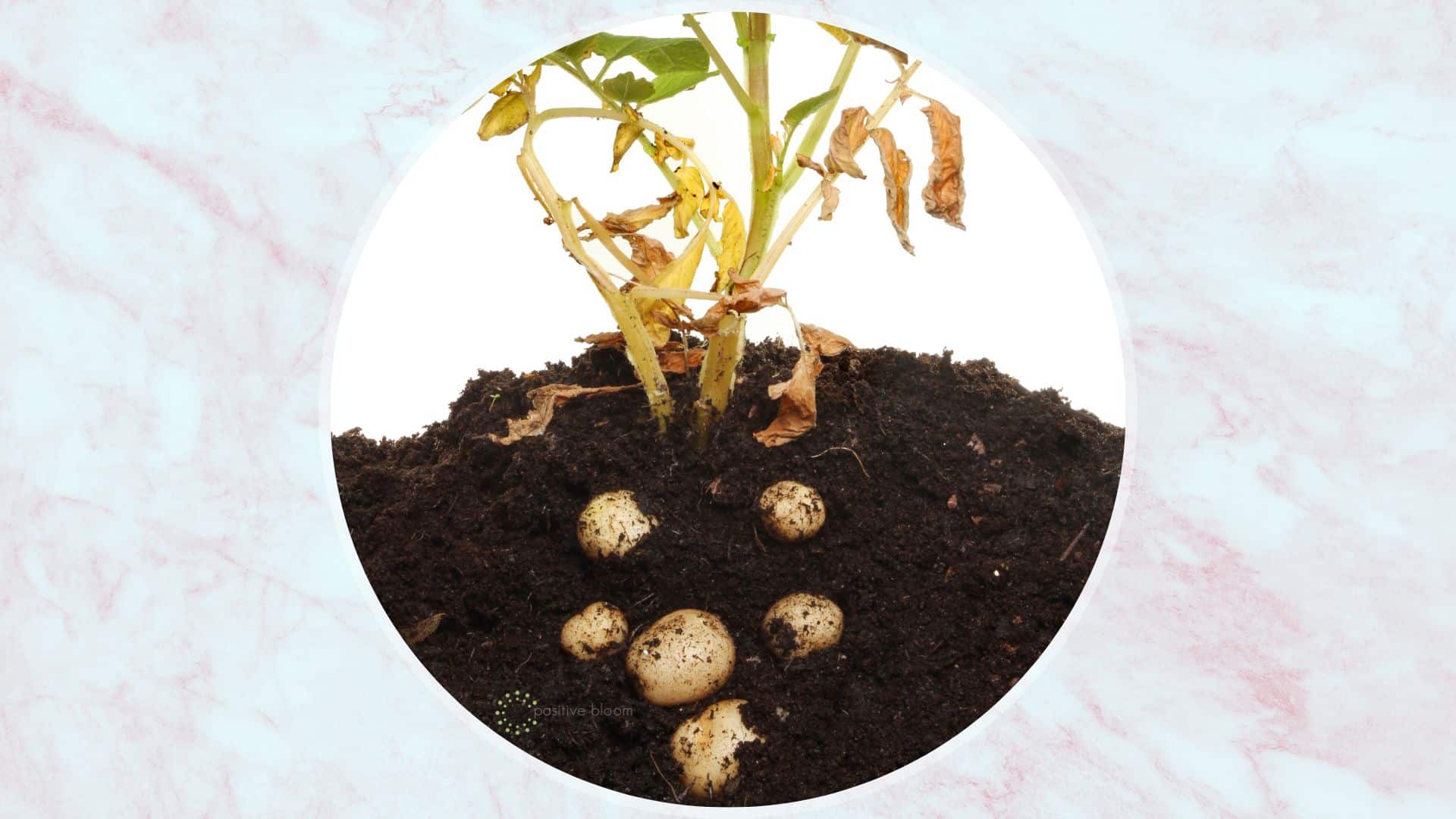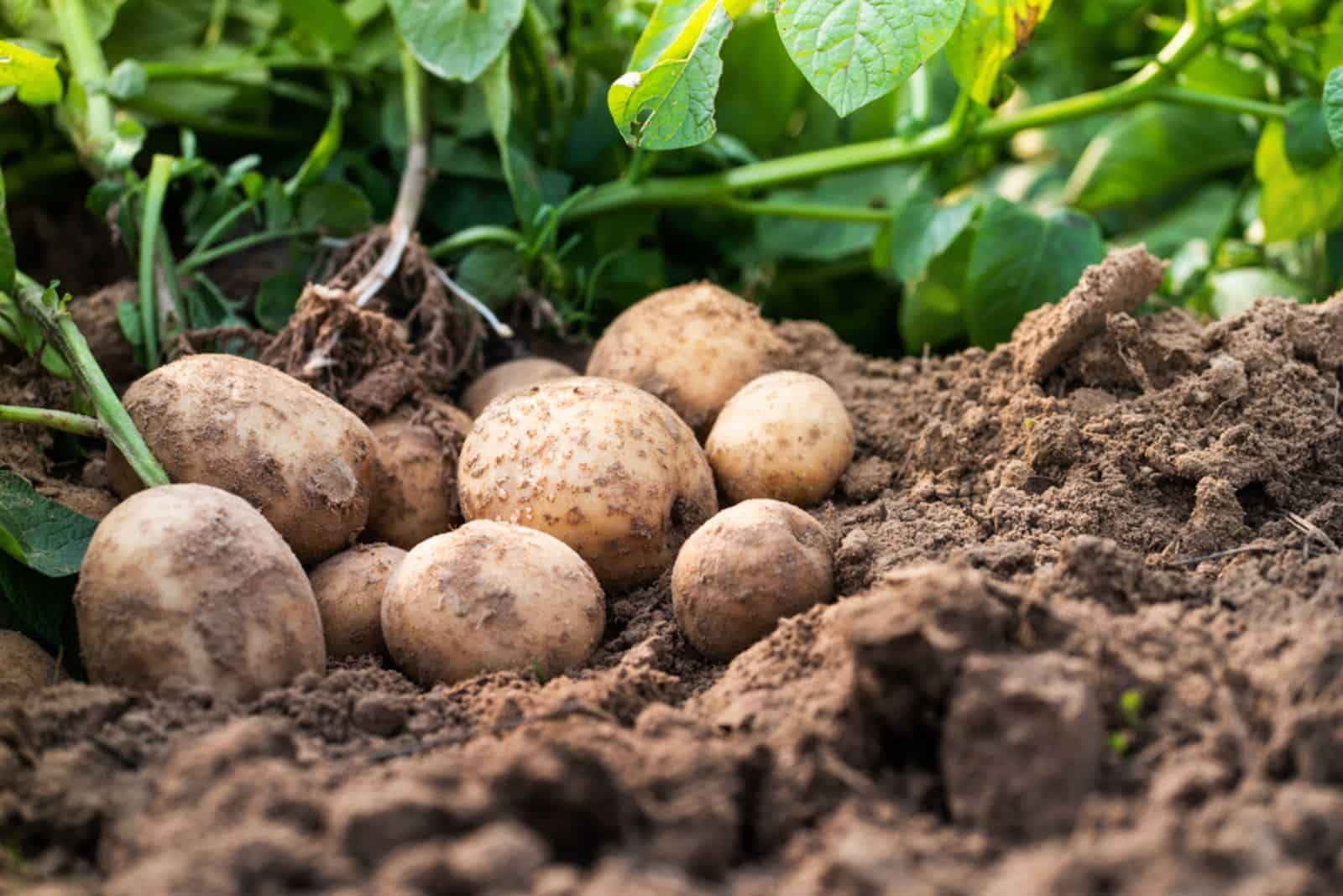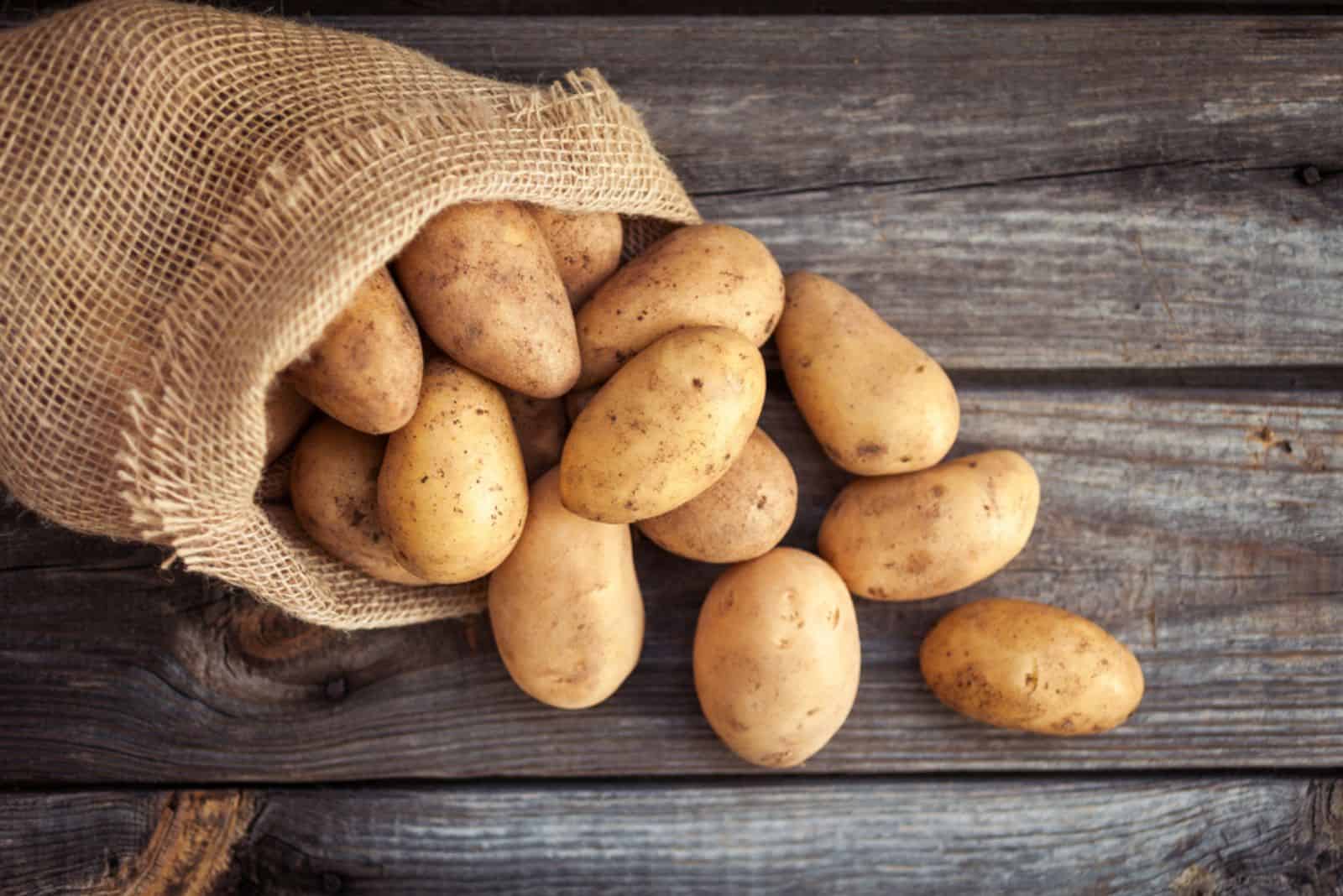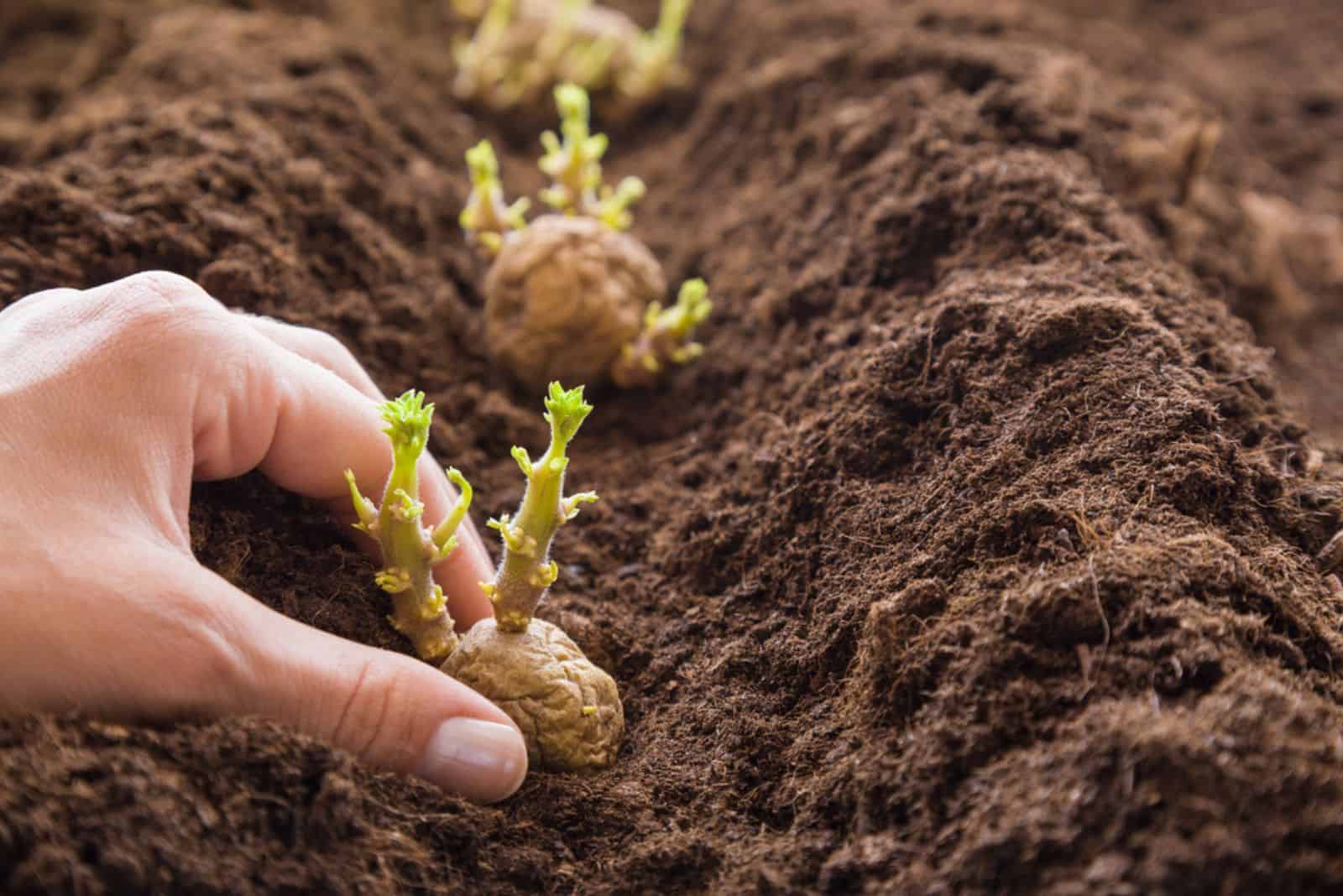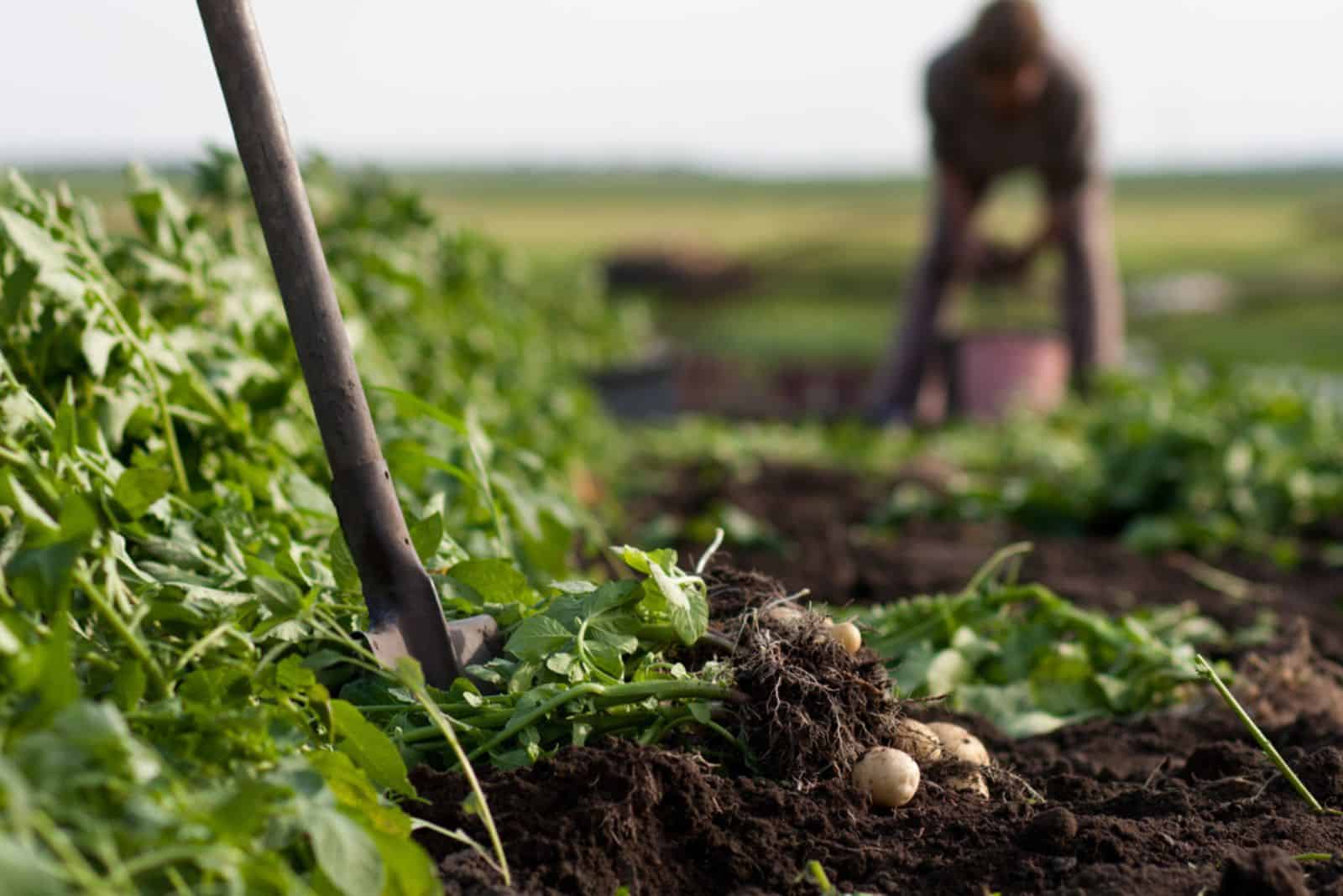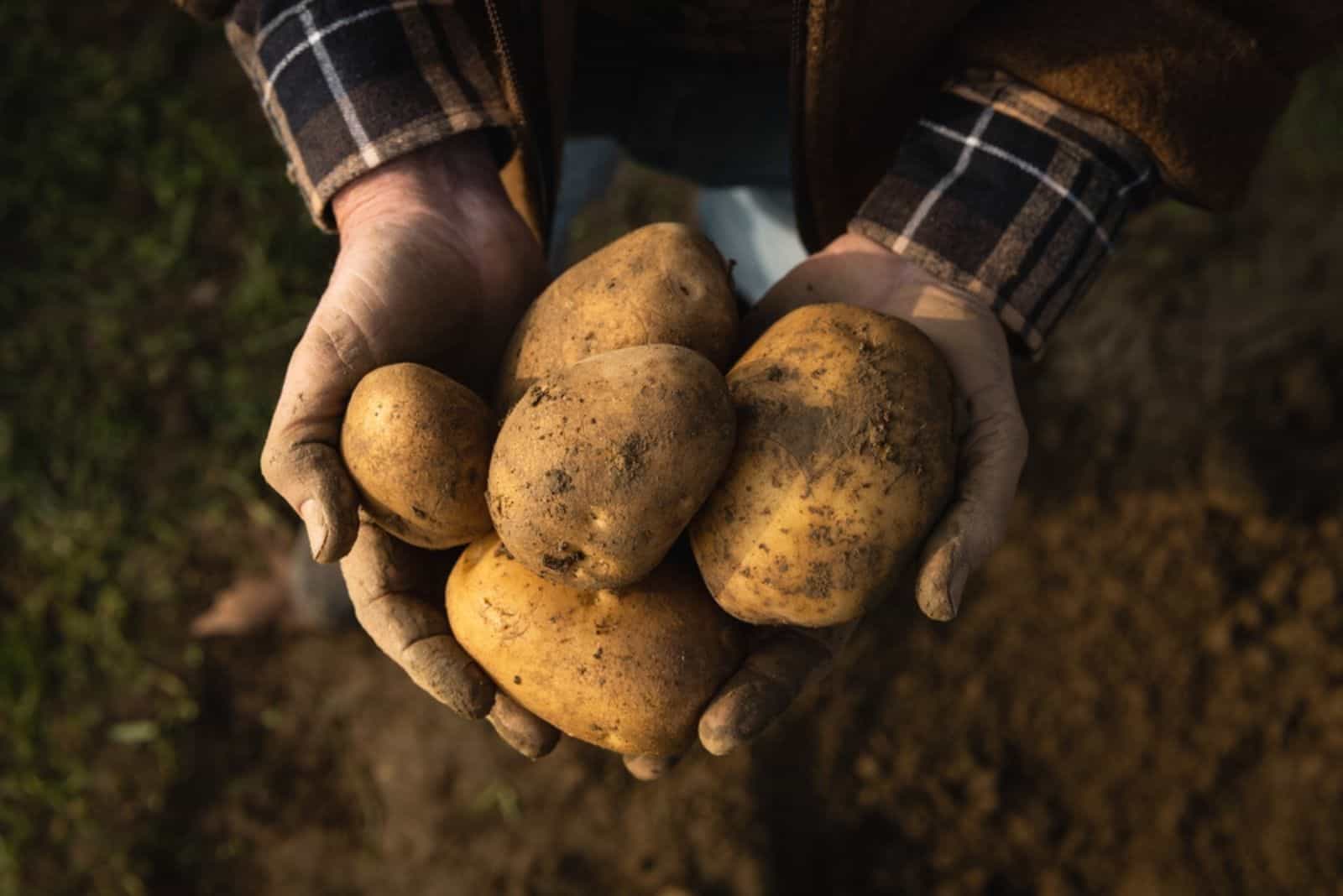Yum, yum! Delicious potatoes are probably the most famous veggie cultivated worldwide.
Generally speaking, growing potatoes isn’t really challenging, but the first year may be problematic unless you figure out which variety is the most suitable for you, as well as how to plant them.
If you’ve followed the experts’ recommendations and harvest time is coming closer, I’m sure you’ve been wondering how many potatoes per plant you can expect. It’s a completely legit question since the more potatoes we get, the more french fries and potato pies we’ll be able to make!
In addition to this, I’ll also tell you how many pounds of potatoes you can get per plant, what causes a decrease in yield, and the best way to grow potatoes so you can get as many potatoes per plant as possible.
Let’s get started!
How Many Potatoes Per Plant?
If you plant your potatoes correctly, you will most likely get 10 crops from each single plant. Sounds perfect, right? Well, I must tell you that 10 is actually the average, and such a yield is only possible in ideal conditions.
Another factor to consider is the cultivar you choose to grow; sometimes 5 potatoes per plant is the maximum even under ideal conditions.
The third factor is the harvest time; one of my friends adores young potatoes, so if you’re also a young-potato lover, you’ll most probably get fewer potatoes per plant.
Now, let’s see how many potatoes you can expect from the most popular potato varieties.
How Many Yukon Gold Potatoes Per Plant To Expect
The popularity of this delicious cultivar seems to grow everyday, and it’s no wonder; I mean have you tried roasted Yukon Golds from the oven? They’re incredible!
When it comes to Yukon Gold potatoes, you can expect each plant to produce up to 10.
I had an amazing yield of Yukon Gold potatoes last year!
So, my raised garden bed is 8×3 feet, and I planted about 3 pounds of seed potatoes. After about three months, the time for harvesting finally came.
I got 28 pounds of potatoes, and each plant had approximately 10 potatoes (not all of them). This was not the best yield I’ve had so far, but it’s far from bad.
How Many Sweet Potatoes Per Plant To Expect
Again, if planted correctly, you can get anywhere between 5 and 10 of this potato cultivar per plant. I have to mention that the number of sweet potatoes you’ll get per plant also depends on the climate in your area.
The warmer the climate, the more potatoes you’ll get. Of course, the size may also affect the number of potatoes; for instance, you might get 5 large sweet potatoes or 10 smaller ones per plant.
How Many Pounds Of Potatoes Per Plant?
Now let’s talk in pounds. Maybe this is a more precise way to predict the yield of potatoes.
As mentioned, I got 28 pounds of Yukon Gold potatoes, and I planted 3 pounds.
So, I got about 10 pounds of crops per pound of seed. Believe it or not, you can get 25 pounds of crops per pound of seed potato! Novice gardeners might be very surprised by this fact.
How come? Each seed potato can give you anywhere between 3 and 5 plants. If each plant gives you, let’s say, 5 potatoes weighing 1 pound altogether, it’s 25 pounds of potatoes!
It can be more and it can be less, but as long as it’s above 8 pounds, your yield is great!
How Many Seed Potatoes Do You Need?
It’s time to count how many potatoes you need to plant per foot, and how many potatoes you can expect to get; both in numbers and pounds.
Assume you have a 25 foot row; in this case, you’ll need approximately 5 pounds of seed potatoes.
If each seed potato gives you, let’s say, 15 pounds of potatoes, you’ll get 75 pounds of potatoes per row.
How To Plant Potatoes
Now that you know what yield to expect and how many pounds of potatoes you need, it’s time to plant them.
The growing stages of potato plants include a seed, seedling, tuber initiation, tuber bulking, and mature stage.
Since it all begins with seed starting, I’ll tell you how to do it in detail! Let’s start with presprouting, i.e. speeding up potato sprouting.
Presprout Your Potatoes
One of the major benefits of potato presprouting is enhancing plant development in the early stages. It will also help you avoid many pest issues, and your yield may also increase.
Determine the planting time based on your region. Start presprouting approximately a month and a half before this by putting the tubers in a dark place, but with slightly warmer temperatures.
You can relocate the tubers about two weeks later, but this time put them in a spot exposed to bright indirect light. Leave them in the same spot for approximately 4 weeks. It’s not too important if you plant them a little sooner or later.
Prepare The Soil
If you want a good potato yield, you need to prepare soil that meets their requirements.
There are two things to pay attention to when preparing the soil for potatoes. If you want to get the tastiest potatoes ever, you need to ensure they get free-draining soil to avoid rotting, and fertile soil to avoid nutrient deficiency.
Adding a layer of aged manure can help you increase soil fertility
Plant Potatoes
I adhere to one thing when it comes to planting potatoes; 45 degrees Fahrenheit is the minimum soil temperature before I put potatoes in the ground.
The recommended hole depth for seed potatoes is about 6 inches. Put the seed potato (smaller or sliced) in the hole, paying attention to sprouted eyes (they should face upwards).
I recommend spacing each hole about a foot apart. Add a layer of soil (3 inches) over each hole.
Hilling
You’ll get the best results if you hill these veggies when they’re about 8 inches above the soil line. Mulch is an excellent option for hilling.
You can hill again when your potatoes are about 16 inches above the soil line.
Causes Of Decrease In Potato Yield
What’s wrong with my yield? That was my first question after I planted these tasty veggies for the first time. I mentioned how many pounds of potatoes you can get on average; if it’s less, there’s really nothing to worry about.
But if the yield was really poor, and you didn’t get even half of the minimum, something went wrong.
Weeds are one of the most frequent causes of a decreased potato yield. Pests, such as the Colorado Potato Beetle, potato leafhopper, and wireworms are frequent invaders in potato plant cultivation.
Late blight has destroyed many a potato field, so please check twice when buying seed potatoes.
Incorrect spacing between potato plants can also lead to a decreased yield. Additionally, inadequate care during the potato growing season can lead to a significantly decreased yield.
In the next section, I’ll give you some care tips so you can get the most out of potato season!
How To Get More Potatoes Per Plant
The best ways to get more crops, i.e., increase yield, is to plant accordingly, meet all plant care requirements, and inspect them regularly.
Here are some of my top tips:
1. Presprout your potatoes to enhance development and avoid pest issues.
2. Ensure a free-draining and nutrient-rich soil for your potatoes to avoid waterlogging and nutrient deficiency. Soil temperature when planting these veggies shouldn’t be less than 45 degrees Fahrenheit.
3. 6-inch deep holes and a spacing of 1 foot between each hole will help you avoid overcrowding, which can result in decreased yield.
4. Hill your potatoes when they are 8 inches tall, and again when they reach 16 inches.
5. Add about an inch or two of water weekly. I recommend using pressure washers with a suitable garden hose (it’s really beneficial). If you live in a rainy area, cut back on watering.
6. Regularly inspect your Solanum tuberosum plants for pests and diseases; crop rotation is one of the best ways to deal with both potato pests and diseases.
Wrapping Up
So, how many potatoes per plant? Now you know the answer! The truth is that potato cultivation is beneficial for two reasons; one, you get a high yield, and two, you get an organic product.
Correctly planting potato plants is really half the job, as appropriate sprouting, mulching, spacing, and hilling is the only way to allow the potatoes to reach mature growth stage.
In the meantime, water your potatoes according to a schedule based on your region, and keep an eye out for pests and diseases.
Good luck, and enjoy tasty potato dishes all winter long!
Until next time.

